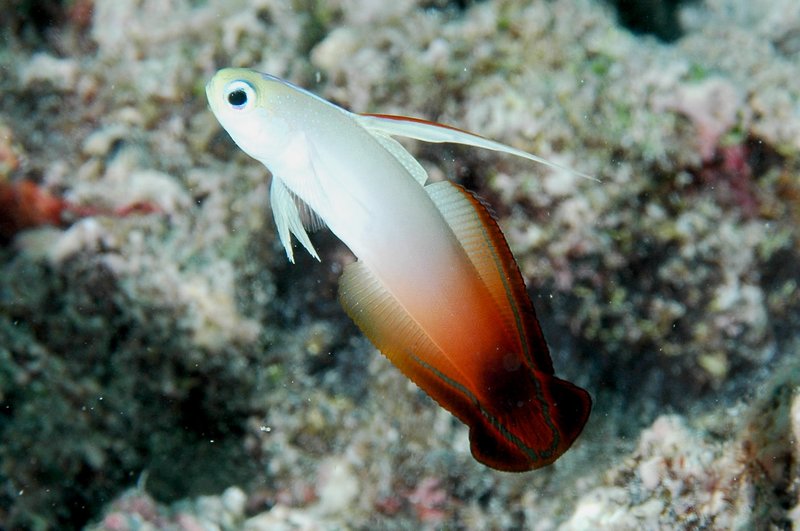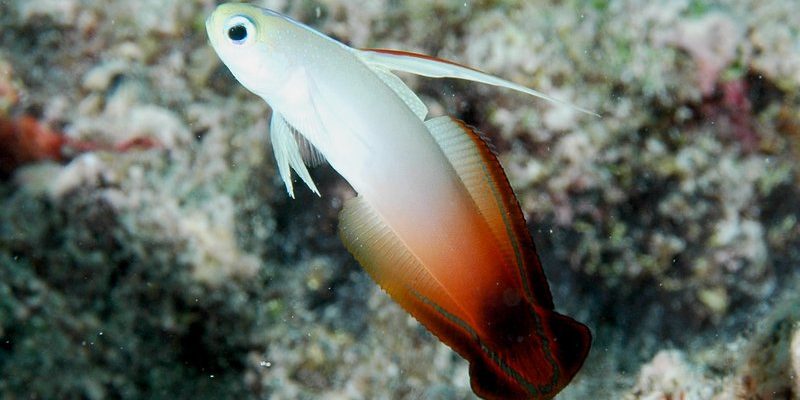
Imagine a tiny fish darting through the vibrant waters of coral reefs, its colors shimmering like jewels. That’s the dartfish for you! These unique little creatures are known for their incredible swimming ability, agility, and striking appearance. If you’ve ever found yourself staring at an aquarium, mesmerized by the dartfish’s swift movements and brilliant colors, you know just how captivating they can be.
Dartfish belong to the Gobiidae family, which is one of the most diverse families of fish in the world. They inhabit various marine environments, primarily living among the corals and sand of the ocean floor. You might be surprised to learn that while they’re small, dartfish play significant roles in their ecosystems, from foraging for food to serving as prey for larger fish. Let’s dive a little deeper into the world of dartfish and explore what makes them so special.
What Are Dartfish?
Dartfish are small, elongated fish that typically measure between 2 to 4 inches in length. They are known for their long dorsal fins, which can be quite striking. One of their most distinctive features is their ability to dart rapidly from one spot to another, which is where they get their name. This quick movement is a survival tactic, helping them evade predators lurking in the shadows of coral reefs.
These small fish are primarily found in warm, shallow waters across the Pacific and Indian Oceans. They often take refuge among the coral and sand, creating a network of burrows to hide from larger fish. This behavior is not just about protection; it also keeps them safe while they search for food. Their diet mainly consists of small zooplankton and tiny crustaceans, which they expertly hunt in their underwater homes.
Physical Characteristics of Dartfish
Dartfish are indeed a sight to behold! Their bodies are generally elongated and slender, which allows them to navigate through tight spaces with ease. You’ll often notice their vibrant colors—ranging from bright yellows to deep blues—that help them blend into their surroundings while also making them visually stunning to observers. The coloration can vary significantly among different species, so there’s always something new to admire.
One of the most remarkable adaptations of dartfish is their unique fin structure. Their dorsal fin is long and often stands tall when they’re stationary, almost resembling a sail. This enhances their profile and can be used for balance while swimming. Moreover, the positioning of their eyes allows them to be aware of their surroundings, keeping a watchful eye out for predators while they search for food on the ocean floor.
Habitat Preferences
Dartfish thrive in specific habitats where they can find plenty of cover and food. Most commonly, they are found on sandy bottoms near coral reefs, where they can dig burrows. These burrows offer them shelter from predators and a place to rest. The coral reefs also provide an abundance of food sources, making this an ideal living condition for them.
Interestingly, dartfish are known to be social creatures. They tend to live in small groups, which provides additional protection from predators. When swimming, they often stick together, darting in and out of crevices within their habitat. This behavior not only strengthens their safety in numbers but also helps them forage for food more effectively as a team.
Table: Key Facts About Dartfish
| Attribute | Details |
|---|---|
| Size: | 2-4 inches long |
| Habitat: | Shallow waters of the Pacific and Indian Oceans |
| Diet: | Small zooplankton and crustaceans |
| Life Span: | 3-5 years in the wild |
| Coloration: | Varies widely by species, often bright and vivid |
| Social Behavior: | Tend to live in small groups |
Behavior and Adaptations
One of the standout traits of dartfish is their remarkable capacity to dart away from danger at a moment’s notice. This ability isn’t just a fluke; it’s a well-honed survival skill. When a threat is detected, dartfish can quickly retreat into their burrows, using them as a safe haven. This quick escape maneuver is not only impressive but crucial for their survival in the wild.
Their social behavior also plays a key role in their adaptations. You might see groups of dartfish swimming together, a behavior that helps them detect predators more effectively. Being in a group means that there are more eyes watching out for danger, which greatly improves their chances of survival. In addition, living in a group allows dartfish to communicate more effectively and cooperate when foraging for food.
Reproduction and Lifespan
Dartfish generally reproduce through a process called external fertilization, where the female lays eggs and the male fertilizes them outside her body. This typically occurs in the safety of their sheltered habitats, where eggs can be well-hidden from potential predators. The female can lay hundreds of eggs at a time, increasing the likelihood that some will survive to adulthood.
Conservation Status
While dartfish are not currently listed as endangered, their habitats are under threat from various human activities. Coral reef degradation, pollution, and overfishing can lead to significant impacts on their populations. Protecting coral reefs is crucial not only for the dartfish but for the entire ecosystem. Healthy reefs provide shelter for countless marine species and contribute to the overall health of our oceans.
Conservation efforts are ongoing, focusing on protecting marine habitats and educating the public about the importance of these delicate ecosystems. By participating in local beach clean-ups, supporting sustainable fishing practices, and advocating for marine protection, you can help ensure that dartfish and their habitats are preserved for future generations.
FAQ
What do dartfish eat?
Dartfish primarily feed on small zooplankton and tiny crustaceans found in their habitats. They often forage in groups, which helps them locate food more effectively. Their diet may change slightly depending on the specific species, but the primary focus remains on small organisms available in their coral reef environments.
Are dartfish good for home aquariums?
Yes, dartfish can make great additions to home aquariums, especially those designed to mimic their natural environments. They are generally peaceful fish, but they may feel stressed in crowded tanks or if they lack hiding spaces. Providing plenty of hiding spots and ensuring a stable environment will help them thrive.
How do dartfish avoid predators?
Dartfish use their quick swimming abilities to evade predators. Their first line of defense is to dart into their burrows when they sense danger. Additionally, living in groups allows them to keep an eye out for threats, enhancing their survival chances.
What is the typical lifespan of a dartfish?
The lifespan of a dartfish is usually around three to five years in the wild. This relatively short lifespan means they rely on quick reproduction to maintain their populations in their natural habitats.
Can dartfish change colors?
While dartfish typically have consistent color patterns based on their species, factors such as stress or temperature can influence their coloration slightly. However, they don’t change colors dramatically like some other fish species. Their vibrant and distinct colors are vital for camouflage and communication with other dartfish.
What role do dartfish play in their ecosystems?
Dartfish play an essential role in their ecosystems by helping maintain the balance of marine environments. As foragers, they help control populations of small zooplankton and crustaceans. Moreover, they serve as prey for larger fish, contributing to the food web within coral reef ecosystems.
Where can I find dartfish in the wild?
Dartfish are typically found in warm, shallow waters of the Pacific and Indian Oceans. They prefer sandy bottoms and coral reefs, where they can easily find food and shelter. If you’re looking to observe them in the wild, diving or snorkeling in these regions would give you the best chance!
Are there different species of dartfish?
Yes, there are several species of dartfish, each with unique features and characteristics. Some species differ in coloration, size, and habitat preferences. Each species contributes to the diversity of the dartfish family and plays a specific role within their ecological niches.

